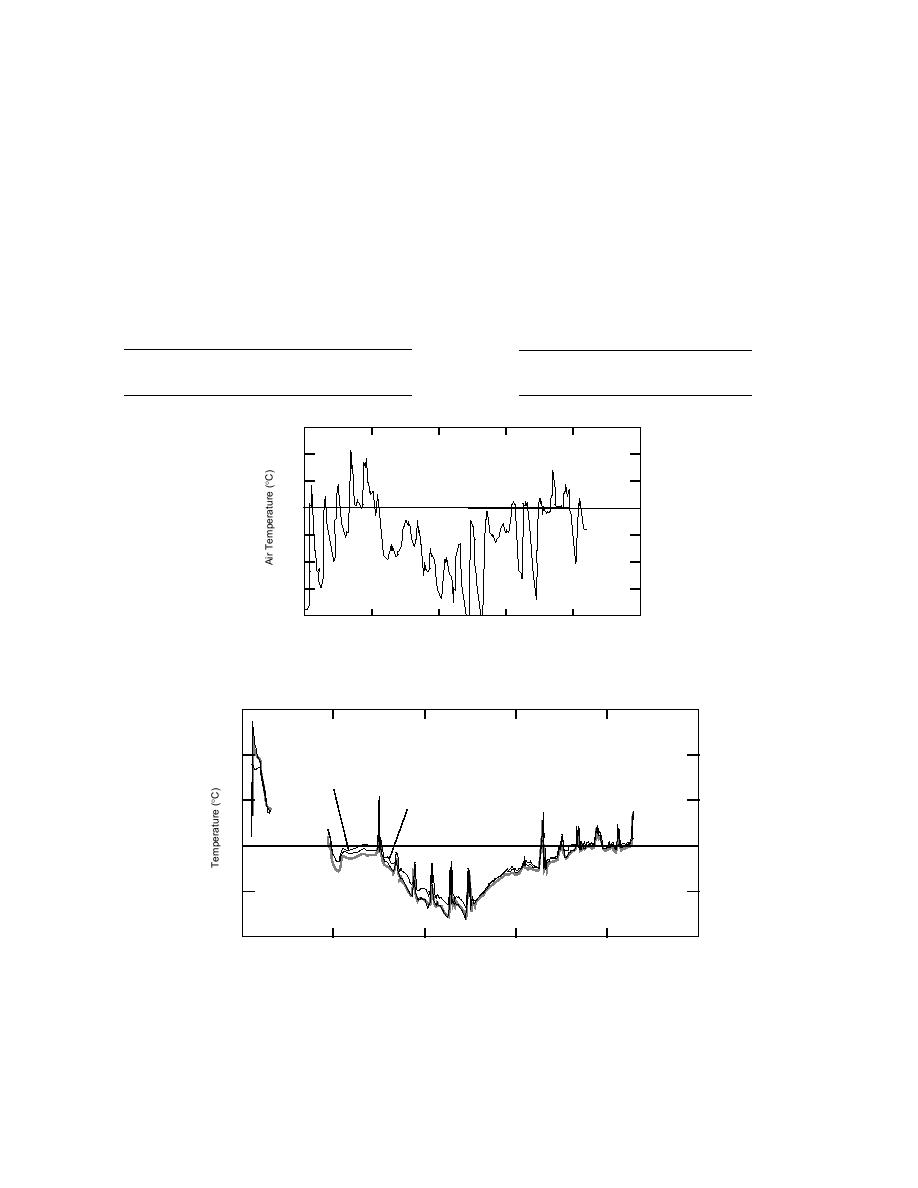
slab and six through the wall beginning at one
times when each concrete was placed. The air
temperature (Fig. 9) averaged 1.4C (29.5F) over
surface and ending at the other. An additional
the first five days, with a high of 10C (50F) and
thermocouple was positioned away from the con-
a low of 16C (3.2F), while the concrete aver-
crete out of direct sunlight to record ambient air
aged 2.2C (36.0F) over that same period. The air
temperature. A malfunction of the data recorder
temperature on the 17th (day 1) began at 16C
eliminated some temperature recordings from
(3.2F) at 7:30 a.m., rose to a high of 4.5C (40.1F)
portions of days two through five. Some thermo-
couple locations were unable to be read at all due
at 2 p.m., and then dropped off to well below
to apparent problems with the sensors themselves.
freezing that night. The slab concrete (with
Figures 911 provide the recorded tempera-
Pozzutec 20) temperature (Fig. 10) at placement
(12:30 p.m.) was 10C (50F). It cooled to about
ture histories. Table 25 gives the approximate
Table 24. Properties of fresh concrete.
Table 25. Concrete placement time.
Slump
Air
Unit wgt
Concrete
C (F)
kg/m3(lb/ft3)
Mix
mm (in.)
(%)
Mix
Date
Start
P20
210 (8.25)
4.4
2389 (149)
10 (50)
P20
17 Feb
12:30 p.m.
EY-11
127 (5.00)
4.0
2357 (147)
16 (61)
EY-11
18 Feb
12:05 p.m.
15
10
5
0
5
10
15
20
0
5
10
15
20
25
Time (days)
Figure 9. Air temperatures from 7:30 a.m., 17 Feb, through
12:30 a.m., 10 Mar 1994, at Hanover, New Hampshire.
15
10
4.8 cm
Below Top Surface
Bottom
5
of Slab
0
9.5 cm
above Base
5
10
0
5
10
15
20
25
Time (days)
Figure 10. Temperature history of the Pozzutec 20 concrete slab placed on grade at
Hanover, New Hampshire. The slab was placed at 12:30 p.m. on 17 Feb (day 1). A
malfunction of the data recorder eliminated temperatures from portions of day 2
through day 5.
19



 Previous Page
Previous Page
